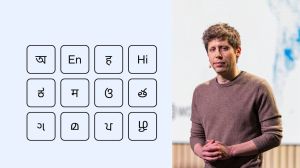Era of convergence
Today, the telecom industry is segmented, based on the underlying delivery infrastructure through which communication of voice, data or vi...

Today, the telecom industry is segmented, based on the underlying delivery infrastructure through which communication of voice, data or video is delivered. The actual technology used to deliver these voice, data and video could be wireline or wireless.
Based on this broad classification, the telecom licensing authority or the Government of India has been following a policy of issuing separate licences for basic, cellular, internet service provision, satellite and cable TV operations.
While the present policy may suit the present situation where these technologies are still vastly different, these may not remain the same tomorrow due to technology advancements. The way technologies are developing internationally, within the next couple of years convergence of media, computing and communications will become a reality. It is due to this that convergence of technologies has increasingly received the attention in recent times.
What has made convergence feasible is technology. The convergence oftechnologies in these areas has brought in a paradigm shift in the way telecommunications work. As such, the above mentioned differences are gradually melting away. Besides, there are examples of how technology also permits provision of new services over the existing infrastructure. Wireless and wireline are fast converging in terms of carrying capacity be it in the nature of data, video or voice.
It is because of this convergence of technologies that the earlier segmentation of telecom industry on the basis of delivery infrastructure is becoming irrelevant. Likewise, the definition of services based upon the nature of information content will also change. For example, voice, data, video are all coded and transmitted as digital signals or package which are virtually not distinguishable.
The first five years of this century will be devoted completely to convergence of these technologies. Needless to mention that the future policies would have to be technology neutral or technology-proof.
Communicationsin the new millennium will centre primarily around the internet and wired system and will co-exist with the wireless system. Communications will be increasingly through satellite phones, wireless local loops and extensive use of global positioning systems.
Convergence is a reality even today. We are anticipating convergence over the Internet, digital satellite broadcasting, multimedia services and satellite communications including telephones. Voice over the internet is a foregone conclusion. What will happen to all the different telecom licences at that stage is something that the government will have to worry about now.
Investors in these areas are unlikely to make any great commitments in India unless these grey areas are resolved. Future homes would be served by a common cable which will provide internet, telephone, TV and video. Future investments and the business will also be in the area of developing new service platforms for global mobile systems, satellite multi-media system, ATM, internet anddirect to home (DTH). Therefore, the convergence of these technologies will have a potential impact on the society.
There is a need for a single window or licence which would look after all the policies, contentious issues and would prove ultimately better for the operator. From the user’s point of view, it will allow them to take calls from anywhere to anywhere, any time, using any devise, connected to any kind of network. From global perspective, it will facilitate creation of a host of new enhanced communication services.
The author is Director, Shyam Telecom



- 01
- 02
- 03
- 04
- 05




























